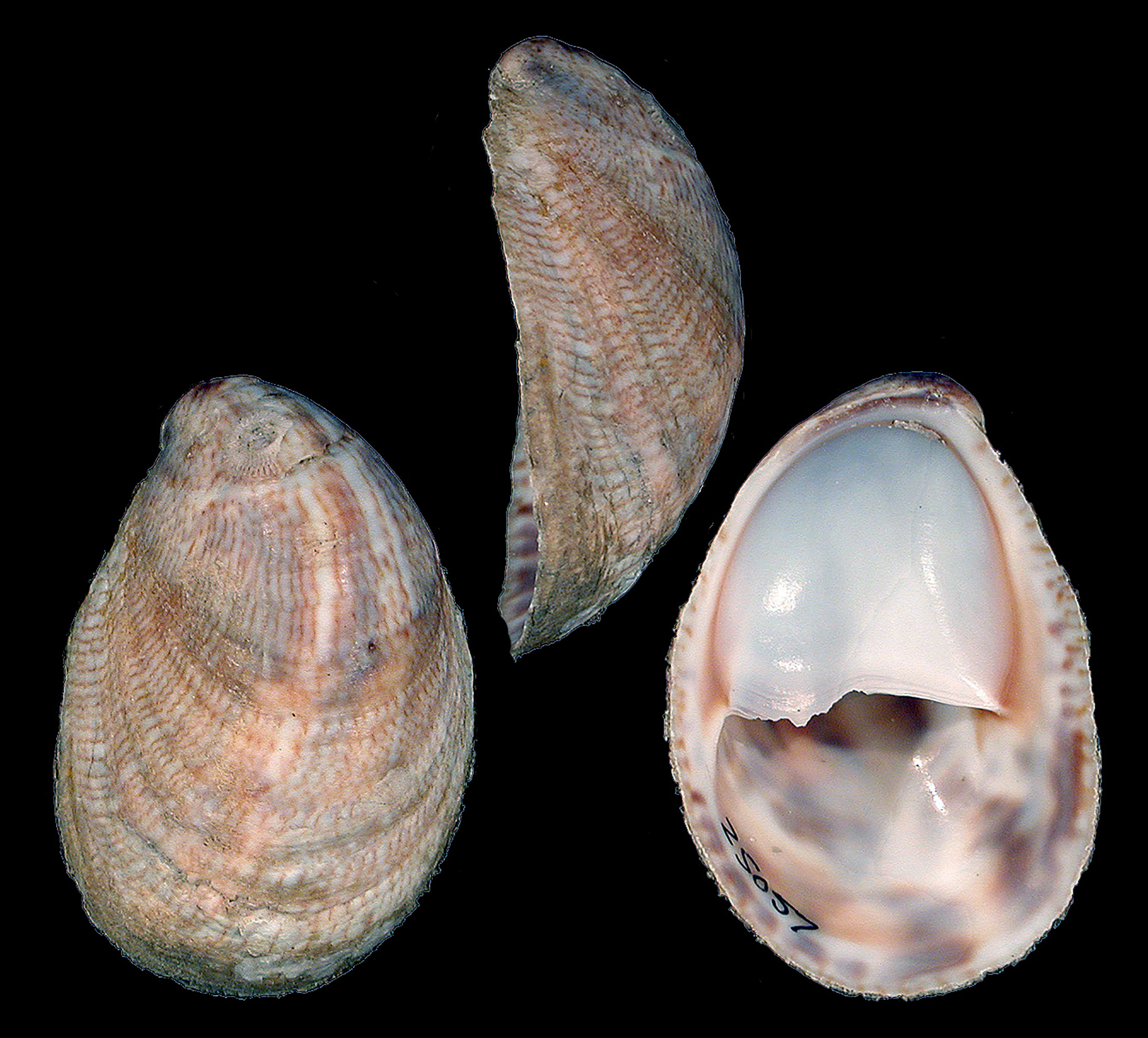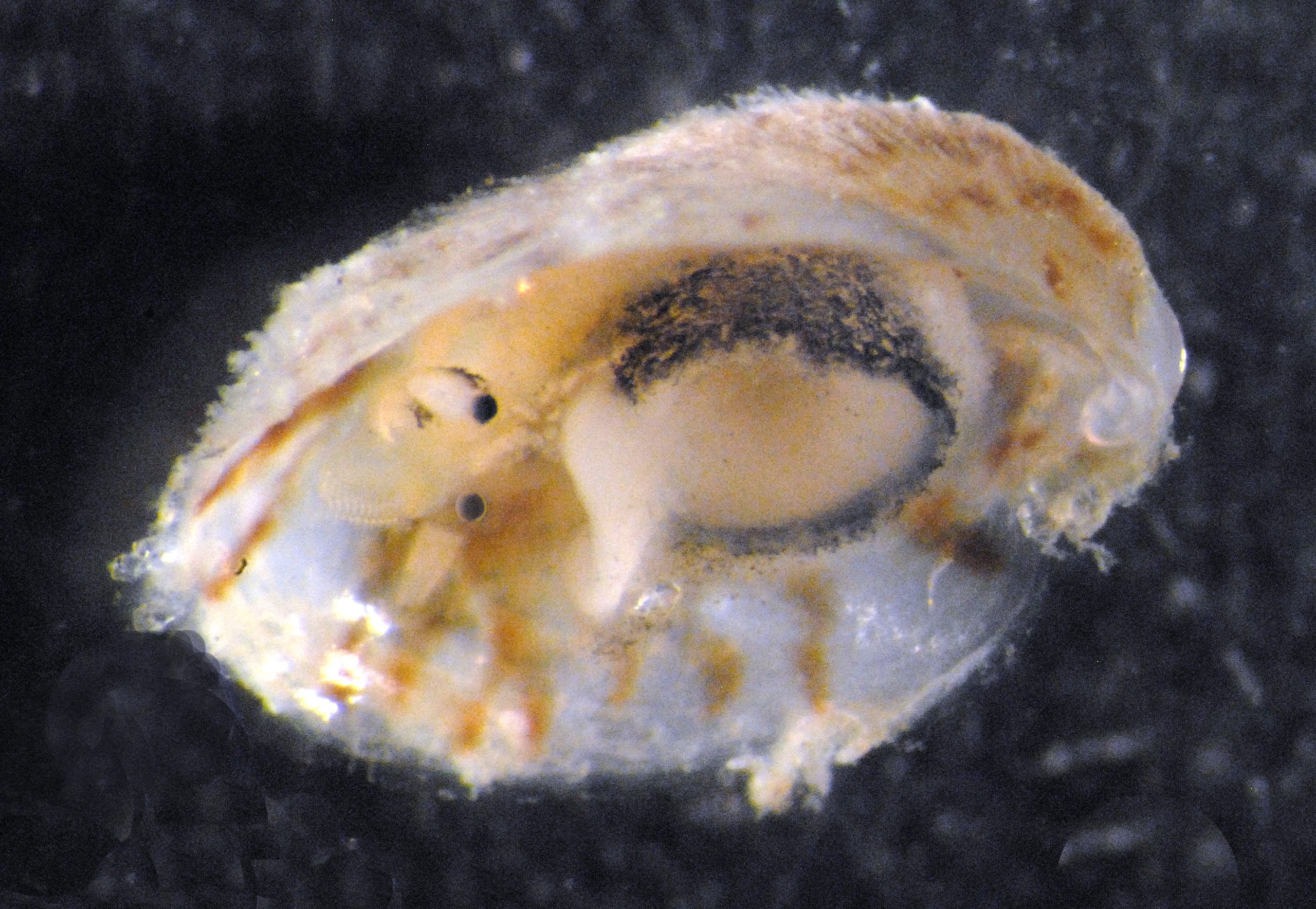Southwest Florida Shells
by José H. Leal
Family Calyptraeidae
Crepidula fornicata
(Linnaeus, 1758)
Common Atlantic Slipper Snail
Shell size locally to 40 mm, species gets to 56 mm in parts of the Eastern Seaboard. Shell ovate, convex, with prominent apex which is turned to one side. Large, white internal septum with curved (convex) edge. Color cream to light-gray with longitudinal, fine dark-brown lines (illustrated) or interrupted dark-brown rays. This is one of the most common gastropod shells found on the beaches of Sanibel and Captiva. Slipper snails have shells that resemble limpets, but can be distinguished from these latter by the internal "deck" or "shelf" that houses the bulk of the snail's organs, and the "twisted" shell apex. Unlike most gastropods, slipper snails are suspension feeders, scooping-up plankton and other materials in suspension from the water that flows through their gills. Common Atlantic slipper snails live on hard substrates such as large shells and rocks. They change sex, from male in the early part of their lives to female in the later stage, and form stacks, with larger individuals (the females) at the bottom, and smaller ones (the males) on top. The supplementary photo on the right shows a young (about 10 mm, or slightly less than ½ inch) common Atlantic slipper snail from Sanibel, showing, among other structures, the eyes, foot, propodium, and radula.

